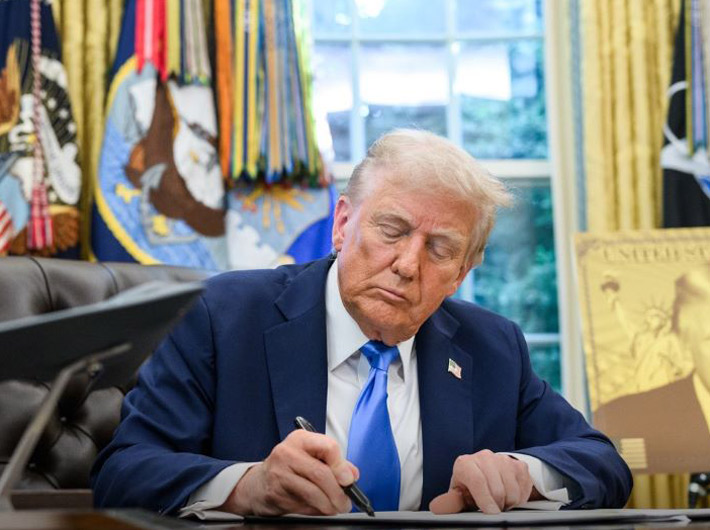It’s not just an immigration story — it is a case study in how policy risk cascades into business strategy
The White House’s decision to impose a $100,000 fee on new H-1B petitions has triggered immediate boardroom conversations across corporate America and far beyond. While the Trump administration frames it as a move to safeguard domestic jobs, the economic implications for firms, global talent flows, and emerging markets are far deeper.
The rule clarifies that existing H-1B holders and pending renewals are exempt, but new entrants face a steep barrier. For global businesses — and for countries like India that rely heavily on IT exports — the aftershocks are already visible.
The business cost calculus
For Fortune 500 tech firms, $100,000 per hire may be absorbed as a cost of continuity, but for startups and SMEs, this is a structural shock. Many operate with limited venture capital runway; the fee could divert millions from product development into compliance.
Consider this: 140,000 new H-1B approvals were granted in FY2024. If even half of those were subject to the new fee, the aggregate bill would cross $7 billion annually. That is capital redirected from innovation, hiring, or market expansion into paperwork.
Large corporations may substitute with local hires, but SMEs risk being priced out of the global talent pool, threatening competitiveness and deepening market consolidation in favour of incumbents.
Impact on the US economy
1. Labour market dynamics: Employers may turn more aggressively to domestic talent, driving up wages in mid-senior tech roles. That benefits American workers in the short term but adds cost pressures for businesses.
2. Innovation risk: The US tech ecosystem thrives on immigrant-led entrepreneurship. Nearly 45% of Fortune 500 firms were founded by immigrants or their children. Restricting inflows risks slowing innovation cycles and diminishing long-term competitiveness.
3. Investment diversion: Faced with steep fees, corporates may pivot investment to offshore R&D hubs or accelerate automation — redistributing rather than creating jobs in America.
Impact on emerging economies
India is most exposed. With a significant share of H-1B workers, Indian IT services firms face an uphill battle. Higher costs reduce onsite placements, forcing firms to rework delivery models. Margins — already under pressure from global slowdown — could shrink further.
At a macro level, remittances from Indian professionals in the US exceeded $30 billion in 2023. A slowdown in migration directly hits household consumption and domestic savings.
Other emerging markets, including the Philippines and Vietnam, may face similar constraints, with talent re-routing to friendlier destinations such as Canada and the EU.
A global equilibrium in motion
Markets adapt quickly. Three trends are already emerging:
• Talent re-routing: Canada’s Express Entry and EU talent visas are poised to benefit, attracting skilled workers priced out of the US.
• Corporate restructuring: Expect a push for near-shore delivery centres in Mexico, Eastern Europe and South-East Asia, reducing reliance on H-1B inflows.
• Legal pushback: Industry groups are preparing litigation, arguing that such a high fee may exceed the executive’s authority to set immigration charges.
What business leaders should watch for
• Balance sheets: Model the $100k fee as a recurring hiring cost; re-evaluate expansion plans accordingly.
• Operational hedges: Invest in hybrid models — local hiring plus offshore R&D.
• Talent strategy: Strengthen remote work pipelines to access global skill without visa exposure.
• Policy risk: Monitor closely for legal challenges or revisions; sudden reversals are not uncommon in US immigration policy.
Bottom line
The H-1B fee is not just an immigration story — it is a case study in how policy risk cascades into business strategy. It changes hiring economics, reshapes global talent flows and forces both firms and countries to rethink competitiveness.
For business leaders and students alike, this episode underscores the lesson: in a globalised economy, talent policy is business policy. The winners will be those who can pivot fastest, hedging risk while continuing to innovate.
Dr. Tinu Jain is Associate Professor, School of Rural Management - XIM University Bhubaneswar, India & Mr. Preet Mishra is 2nd year MBA (Rural Management), School of Rural Management-XIM University Bhubaneswar, India.
Views are personal and not of the institution.


